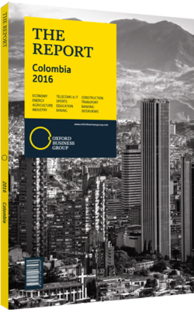Colombia's natural advantages prompt economic turnaround
Colombia’s economy grows above those of its neighbours despite the ongoing crisis of commodity prices. Meanwhile, peace talks with guerrillas face the final stretch and major cities such as Bogotá, Medellín and Barranquilla consolidate as regional capitals of finance, culture and fashion.
Geography & Climate
Located on the northwest corner of South America, Colombia is the only nation in the region with coasts on both the Pacific Ocean and the Caribbean Sea. It is divided into five regions: the Andes Mountains; the Pacific Ocean coastal region; the Caribbean Sea coastal region; the llanos or plains; and the Amazon Rainforest.
Because of its proximity to the equator, Colombia enjoys a tropical and isothermal climate, reducing the changes associated with seasons. Temperatures vary significantly with elevation, however, usually losing 6°C for every 1000 metres gained. With an average temperature of 30°C at sea level, one should expect 24°C at 1000 metres, 18°C at 2000 metres and 12°C at 3000 metres. Colombia has a dry season in the summer and a wet season in the winter, but these vary by region; in Bogotá the rainy season extends from October to December. Colombian festivals generally take place during the dry periods of December to March or July and August.
Federal Government
Colombia is a constitutional republic with executive, judicial and legislative branches. The president is the head of government and elected by popular vote for up to two four-year terms. The legislative branch is divided into two bodies: the Congress, which has 102 members, and the Chamber of Representatives, with 166 members. Both are elected by popular vote to serve terms of four years in length. Colombia has seven major political parties and numerous smaller ones.
Local Government
The country is divided into 32 departments, or states, and one federal district; Bogotá, where the capital of the same name is located. Each department elects its governor by popular vote and is divided into municipalities, of which there are a total of 1123 in the country, according to the National Administrative Department of Statistics. Each municipality, in turn, has a mayor who is elected by popular vote. Mayors serve terms of two years, except the mayor of Bogotá, whose term is four years in length. Bogotá’s new mayor, Enrique Peñalosa, begins his mandate in 2016, something celebrated by local and foreign investors due to his liberal nature.
Language
Around 99% of the Colombian people speak Spanish, although more than 65 other languages are also spoken in the country, with Wayú, Paez, and Embera being the only three with more than 50,000 speakers. Two other important non-Spanish languages in Colombia are Chibchan, which is spoken by the Muisca Indians in the region in and around Bogotá, and Zenú, which is spoken in the Atlantic regions of Cordoba and Sucre. English is regarded as an official language on the islands of San Andrés, Providencia and Santa Catalina because of their location in the Caribbean Sea.
Nature Tourism
Colombia has 55 protected natural areas, comprised of national parks, fauna and flora sanctuaries, nature reserves, park-ways and “unique natural areas”. These areas constitute 12% of the nation’s territory, taking in snow-capped mountains, volcanoes, jungles, deserts, beaches and plains. Although the Natural National Parks Service requires entrance permits, in 2013, 664,000 people visited the parks, according to Proexport Colombia, the government agency for promoting foreign trade.
Getting There & Back
While there are no restrictions placed on any nationalities in terms of travel to Colombia, a visa is required for citizens of certain countries. Bogotá’s El Dorado International Airport accounts for approximately half of the country’s total air traffic and offers daily flights to major destinations in the US, Europe and Latin America.
You have reached the limit of premium articles you can view for free.
Choose from the options below to purchase print or digital editions of our Reports. You can also purchase a website subscription giving you unlimited access to all of our Reports online for 12 months.
If you have already purchased this Report or have a website subscription, please login to continue.

